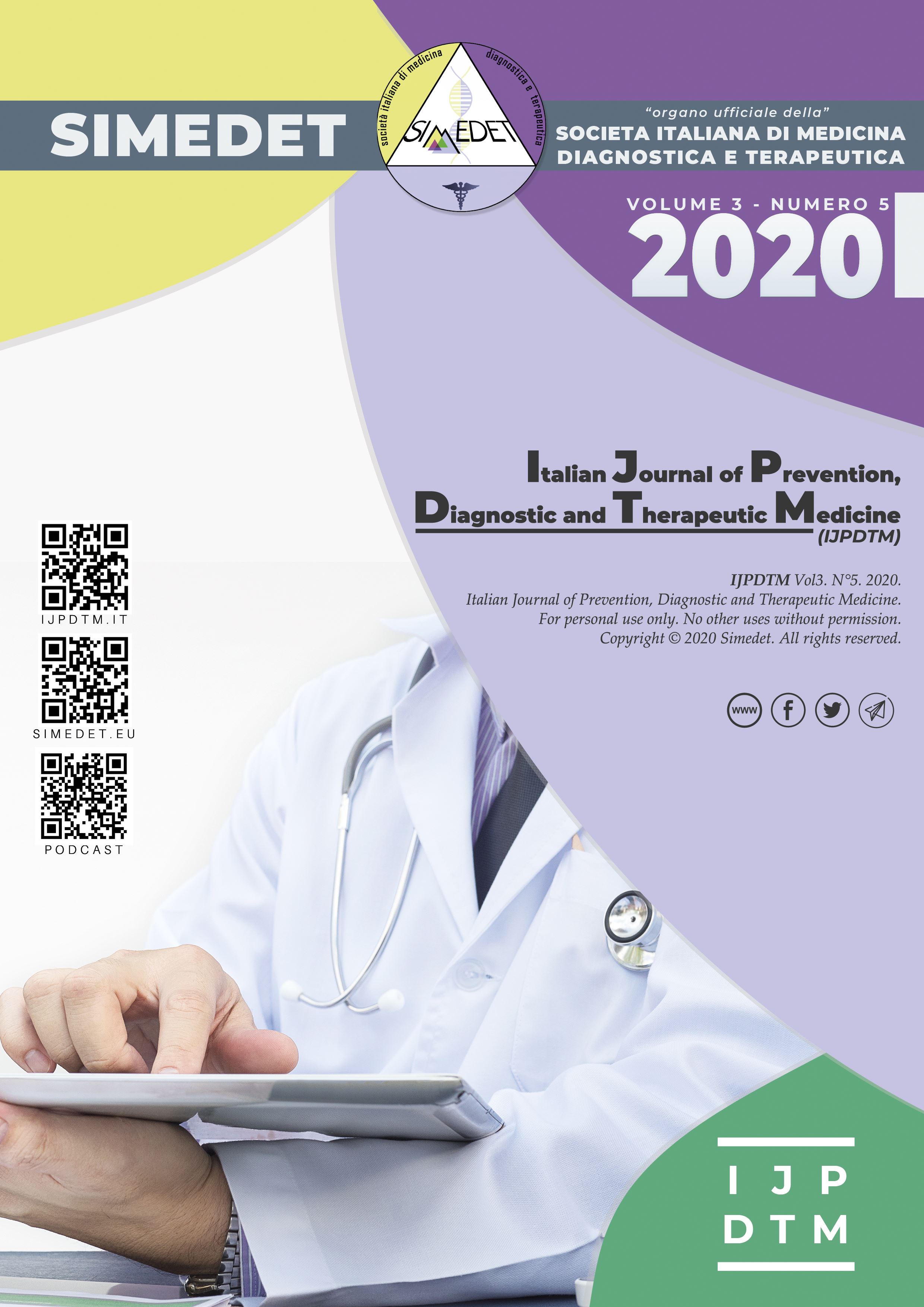Cat allergy clarification and clinical management
Main Article Content
Abstract
The increasing presence of cats in homes, associated with significant levels of dog and cat allergens in areas where no animals are present (homes, schools, nurseries, places of work), has contributed to an increase in the frequency of allergy to these animals in industrialized countries. Animals are therefore the third leading cause of allergic asthma, after mites and pollens. In addition to pet owners and their family members, professionals involved in animal care and research are a clearly affected group, representing up to a third of sensitized patients. Cat allergy represents a significant health problem with unresolved questions about clinical management, diagnosis, treatment and prevention. Symptoms range from mild rhinoconjunctivitis to potentially life-threatening asthmatic exacerbations. In vivo and in vitro diagnostics of cat allergy is currently based on cat dander extract.
With the introduction of allergens produced by recombinant techniques, a large panel of recombinant allergenic molecules including the major cat allergen, recombinant Fel d 1, has become available for immunological investigations, diagnosis and treatment. Studies have shown that this single allergen, which belongs to the uteroglobin protein family, is at least as good as cat dander extract in identifying cat-allergic patients. Fel d 1, is produced by the skin and by salivary and lacrimal glands of the cat, is transferred to the pelt by licking and grooming. Dried saliva and dandruff are spread from the cat hair as small airborne particles into the surrounding environment, where they may cause sensitization in susceptible individuals. Fel d 1 is the dominant cause of allergic symptoms among patients sensitized to cat, and sensitization to Fel d 1 is a risk factor for developing asthma.
Allergen-specific immunotherapy is the only treatment able to change the natural course of allergic disease. Immunotherapy with cat dander extracts has proved efficacious for treatment of respiratory allergy to cat.
Downloads
Article Details

This work is licensed under a Creative Commons Attribution-NonCommercial-NoDerivatives 4.0 International License.
References
Portnoy J, Kennedy K, Sublett J, et al. Environmental assessment and exposure control: a practice parameter–furry animals. Ann Allergy Asthma Immunol. 2012;108:223.e1-223.e15.
Shah R, Grammer LC. Chapter 1: an overview of allergens. Allergy Asthma Proc. 2012;33(Suppl 1):S2-S5.
Lodge CJ, Allen KJ, Lowe AJ, et al. Perinatal cat and dog exposure and the risk of asthma and allergy in the urban environment: a systematic review of longitudinal studies. Clin Dev Immunol.
;2012: 176484.
Collin SM, Granell R, Westgarth C, et al. Pet ownership is associated with increased risk of non-atopic asthma and reduced risk of atopy in childhood: findings from a UK birth cohort. Clin Exp Allergy. 2015; 45:200-210.
Park YB, Mo EK, Lee JY, et al. Association between pet ownership and the sensitization to pet allergens in adults with various allergic diseases. Allergy Asthma Immunol Res. 2013;5: 295-300.
Pyrhonen K, Nayha S, Laara E. Dog and cat exposure and respective pet allergy in early childhood. Pediatr Allergy Immunol. 2015;26: 247-255.
Perfetti L, Hebert J, Lapalme Y, Ghezzo H, Gautrin D, Malo JL. Changes in IgE-mediated allergy to ubiquitous inhalants after removal from or diminution of exposure to the agent causing occupational asthma. Clin Exp Allergy. 1998;28:66-73.
de Moral Gregorio A, Carretero An_ibarro P, Mateo Borrega M, Zapata Y_ebenes J. Cap_itulo 20: Principales al_ergenos de interior. En: D_avila Gonz_alez IJ, J_auregui Presa I, Olagu_ibel Rivera JM, Zubeldia Ortu no JM, eds. Tratado de Alergolog_ia. 2 edn, Tomo 1. Madrid, Spain: Erg_on, 2015; 287-310.
Sabbah A, Lauret MG, Chene J, Boutet S, Drouet M. The pork-cat syndrome or crossed allergy between pork meat and cat epithelia (2). Allerg Immunol (Paris). 1994;26:177-180.
Ad_edoyin J, Gr€onlund H, Oman H, Johansson SG, van Hage M. Cat IgA, representative of new carbohydrate cross-reactive allergens. J Allergy Clin Immunol. 2007; 119:640-645
Butt A, Rashid D, Lockey RF. Do hypoallergenic cats and dogs exist? Ann Allergy Asthma Immunol. 2012; 108:74-76.
Kilburn S, Lasserson TJ, McKean M. Pet allergen control measures for allergic asthma in children and adults. Cochrane Database Syst Rev. 2003:CD002989.
Custovic A, Simpson A. The role of inhalant allergens in allergic airways disease. J Investig Allergol Clin Immunol. 2012; 22:393-401.
Crocker DD, Kinyota S, Dumitru GG, et al. Effectiveness of homebased, multi-trigger, multicomponent interventions with an environmental focus for reducing asthma morbidity: a community guide systematic review. Am J Prev Med. 2011;41: S5-S32.
Custovic A, Green R, Fletcher A, et al. Aerodynamic properties of the major dog allergen Can f 1: distribution in homes, concentration, and particle size of allergen in the air. Am J Respir Crit Care Med. 1997; 155:94-98.
Wood RA, Johnson EF, Van Natta ML, Chen PH, Eggleston PA. A placebo-controlled trial of a HEPA air cleaner in the treatment of cat allergy. Am J Respir Crit Care Med. 1998; 158:115-120.
Konradsen JR, Fujisawa T, van Hage M, et al. Allergy to furry animals:
new insights, diagnostic approaches, and challenges. J Allergy
Clin Immunol. 2015; 135:616-625.
Ichikawa K, Iwasaki E, Baba M, Chapman MD. High prevalence of sensitization to cat allergen among Japanese children with asthma, living without cats. Clin Exp Allergy. 1999; 29:754-761.
Luczynska CM, Li Y, Chapman MD, Platts-Mills TA. Airborne concentrations and particle size distribution of allergen derived from domestic cats (Felis domesticus). Measurements using cascade impactor, liquid impinger, and a two-site monoclonal antibody assay for Fel d I. Am Rev Respir Dis. 1990;141:361-367.
Alvarez-Cuesta E, Berges-Gimeno P, Gonzalez-Mancebo E, Fernandez- Caldas E, Cuesta-Herranz J, Casanovas M. Sublingual immunotherapy with a standardized cat dander extract: evaluation of efficacy in a double blind placebo controlled study. Allergy. 2007;62:810-817.
Sundin B, Lilja G, Graff-Lonnevig V, et al. Immunotherapy with partially purified and standardized animal dander extracts. I. Clinical results from a double-blind study on patients with animal dander asthma. J Allergy Clin Immunol. 1986;77:478-487.

